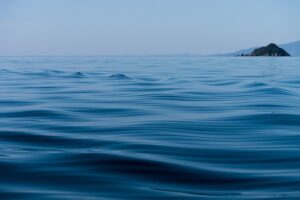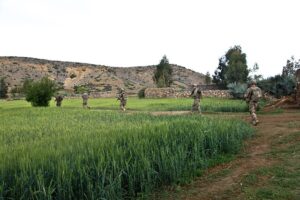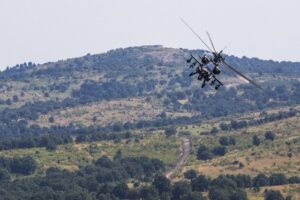
Flashlights for outdoor guides and instructors are essential tools that require specific features to be effective in their roles. These include waterproof and impact-resistant construction, advanced LED technology for energy efficiency and long battery life, multiple beam settings (flood or spotlight) for various lighting needs, and adjustable brightness to conserve power. Regular maintenance is crucial for these devices, involving routine inspections, careful cleaning, thorough rinsing after use in harsh conditions, and the use of recommended batteries to ensure longevity and reliability. High-quality flashlights support the safety and performance of outdoor professionals by providing clear visibility and versatility in diverse environments, making them an indispensable part of their gear.
When venturing into the unpredictable elements of nature, the indispensable tool for illumination is a high-quality flashlight. This article delves into the critical role such devices play for outdoor guides and instructors. We’ll explore the key features that distinguish durable flashlights suitable for harsh conditions, the essential components of a reliable outdoor flashlight, the importance of power efficiency in battery life, and the selection of appropriate beam types for varied lighting needs. Additionally, we’ll provide practical applications showcasing the utility of flashlights in real-world scenarios faced by guides. Finally, best practices for maintaining your flashlight will ensure its longevity during rough terrain excursions. Outdoor guides and instructors rely on flashlights for outdoor guidance; understanding their significance and upkeep is paramount for successful navigation under any condition.
- Understanding the Essential Role of High-Quality Flashlights for Outdoor Guides and Instructors
- Key Features to Look for in a Durable Flashlight for Harsh Environments
- The Anatomy of a Reliable Outdoor Flashlight: Components and Their Functions
- Battery Life and Power Efficiency: A Critical Analysis for Long Expeditions
- Selecting the Right Beam Type for Optimal Visibility in Varied Conditions
- Practical Applications: Real-World Scenarios Demonstrating Flashlight Utility for Outdoor Guides
- Best Practices for Maintaining and Caring for Your Flashlight in Rough Terrain
Understanding the Essential Role of High-Quality Flashlights for Outdoor Guides and Instructors

High-quality flashlights play an indispensable role in the toolkit of outdoor guides and instructors, particularly when navigating harsh conditions. These environments often include unpredictable weather patterns, challenging terrains, and limited visibility, where reliable illumination can make all the difference between a successful expedition and one that ends in distress. Flashlights for outdoor guides and instructors must be robust, durable, and capable of producing a consistent light output over extended periods to ensure safety and effectiveness during night operations or inclement weather. The design should prioritize longevity, with features such as shock resistance, waterproofing, and impact-resistant lenses. Furthermore, the ability to adjust brightness levels allows for energy conservation when full intensity is not necessary, extending battery life—a critical factor when remote or far from resupply points. The beam patterns should be focused yet wide enough to cover large areas or to provide precise illumination where needed, aiding in tasks such as setting up camp, reading maps, or signaling for help if necessary. Instructors using these flashlights can impart practical skills and real-world applications to their students, reinforcing the importance of reliable light sources as fundamental gear in outdoor activities. The selection of the right flashlight is a decision that should not be taken lightly; it’s a tool that can significantly enhance an outdoor guide’s or instructor’s ability to lead safely and effectively through a variety of demanding environments.
Key Features to Look for in a Durable Flashlight for Harsh Environments

When selecting a flashlight designed for harsh environments, durability is paramount to ensure reliability when it matters most. Outdoor guides and instructors, particularly those operating in caves, mountains, or remote wilderness areas, require robust illumination tools that can withstand the rigorous demands of their work. A high-impact, water-resistant body crafted from aircraft-grade aluminum or a similar durable material is essential to protect against drops and immersion in water. This construction also provides a reasonable weight balance for handling ease during extended use.
The best flashlights for outdoor guides and instructors should feature a hardened glass lens or an almost indestructible polycarbonate lens, capable of resisting scratches and impacts. Impact-resistance certification ratings (such as IPX8) indicate the level of protection against water intrusion and submersion, which is crucial when operating in wet environments. Additionally, a flashlight with a thermally regulated design will maintain functionality even after exposure to extreme temperatures, ensuring consistent performance throughout its service life. Features like an anti-roll design, a strong, scratch-resistant finish, and a user-replaceable battery system further enhance the practicality of these devices for those guiding or instructing in challenging outdoor conditions.
The Anatomy of a Reliable Outdoor Flashlight: Components and Their Functions

A reliable outdoor flashlight is an indispensable tool for guides and instructors navigating through harsh conditions, serving as a beacon in unpredictable environments. The anatomy of such a flashlight encompasses several key components, each with a distinct function to ensure optimal performance and longevity. At its core, the flashlight’s construction is typically built around high-strength, durable materials like aircraft-grade aluminum or ruggedized plastics, designed to withstand impacts and resist corrosion from varying climates.
The light source within a top-tier outdoor flashlight is often a high-intensity discharge (HID) bulb or a LED, known for its energy efficiency and longevity, capable of generating a powerful beam that can cut through darkness. The reflector, which surrounds the light source, is precision-engineered to focus the emitted light into a tight, directed beam, essential for long-range signaling or close-up tasks. A well-designed flashlight will also feature a lens that protects the reflector and light source from debris while enhancing light distribution.
The user interface is another critical component. It typically includes a tail switch for momentary or constant-on activation, providing hands-free operation, which is crucial when managing equipment or navigating treacherous terrain. The head of the flashlight houses the focus mechanism, allowing users to adjust the beam width from a narrow spot for distant objects to a broader flood for nearby environments.
Furthermore, the battery compartment must be both waterproof and accessible for recharging or replacing batteries in the field. A robust clasp or O-ring seal prevents moisture ingress while allowing simple operation when needed. Lastly, ergonomic design considerations ensure that the flashlight fits comfortably in the hand, even during prolonged use, and is easy to operate with gloves or when hands are cold. Flashlights for outdoor guides and instructors must embody these attributes to be considered a reliable companion in the field.
Battery Life and Power Efficiency: A Critical Analysis for Long Expeditions

When venturing into harsh or unpredictable environments, outdoor guides and instructors rely on tools that are both dependable and efficient. Flashlights for outdoor guides and instructors must excel in two critical areas: battery life and power efficiency. A flashlight’s battery life is paramount when considering the duration of expeditions, as it directly affects the user’s ability to navigate and perform tasks effectively in low-light conditions. High-quality flashlights designed for outdoor use often feature advanced LED technology that provides a superior light output with less energy consumption compared to traditional bulbs. This innovation significantly extends the operational time between battery changes or recharges, which is particularly crucial during extended excursions where resupply may be challenging or impossible.
Power efficiency in flashlights is not just about conserving batteries; it’s about maintaining a consistent and reliable light source throughout the journey. The best flashlights for outdoor guides and instructors optimize their power usage through features like adjustable brightness settings, allowing users to extend battery life by using lower lumens when full visibility isn’t necessary, and conserving energy for critical moments when higher output is required. Additionally, some models incorporate intelligent thermal regulation systems that prevent overheating, thereby preserving battery longevity. These design elements ensure that the flashlight remains a reliable tool, capable of providing clear illumination for crucial tasks, such as setting up camp or navigating through challenging terrain, without compromising on the duration it can operate before power depletion.
Selecting the Right Beam Type for Optimal Visibility in Varied Conditions

When venturing into outdoor environments, particularly those with harsh conditions, selecting the right flashlight becomes a pivotal decision for guides and instructors. The appropriateness of the beam type can significantly influence visibility and safety during both day and night activities. For open areas where distance is key, high-intensity discharge (HID) or LED flood beams are optimal, as they provide broad illumination suitable for navigating vast landscapes or illuminating large spaces like campsites. These beam types ensure that the environment is well-lit, making it easier to spot potential hazards or points of interest at a distance.
On the other hand, for tasks requiring precise visibility such as map reading or detailed orientation in close quarters, a focused LED spotlight is preferable. It allows users to direct a narrow, intense beam exactly where it’s needed, thus enhancing the ability to focus on small objects or features. Additionally, for versatility and adaptability in unpredictable conditions, flashlights that offer multiple beam settings are highly recommended for outdoor guides and instructors. Such models often include both flood and spotlight options, enabling users to switch between them as needed. This dual functionality ensures optimal visibility regardless of the condition or task at hand, making them indispensable tools in any outdoor professional’s kit.
Practical Applications: Real-World Scenarios Demonstrating Flashlight Utility for Outdoor Guides

Flashlights for outdoor guides and instructors serve as indispensable tools in a myriad of environments, particularly those characterized by low light or complete darkness. These devices are critical for navigating through dense forests, illuminating rocky trails, or signaling during emergencies. The utility of a high-quality flashlight cannot be overstated when one is tasked with leading groups in outdoor settings, where visibility can drastically affect safety and the overall experience. For instance, guiding hikers through a mountain range at dawn or dusk requires a reliable light source to avoid unexpected hazards and ensure the group stays on the intended path. Similarly, during nighttime expeditions, such as stargazing or nocturnal wildlife observation, flashlights enable instructors to maintain a clear line of sight while minimizing disturbances to the environment and the participants’ experience.
In addition to their role in enhancing visibility, flashlights for outdoor guides and instructors are designed with durability and versatility in mind. They often feature waterproof construction, impact resistance, and long battery life, making them suitable for extended use in unpredictable weather conditions or remote locations. The adjustable brightness settings of these devices allow users to conserve power when full illumination is not necessary, and to maximize light output when a stronger beam is required, such as when marking a trail or inspecting the terrain ahead. Moreover, certain models come with additional features like red or green lighting options, which are less disruptive to dark-adapted eyes and can be used for specific tasks that require precision without overwhelming glare. These attributes underscore their importance as essential tools for outdoor guides and instructors who rely on them to maintain the safety and comfort of their groups while imparting knowledge and leading adventures in natural settings.
Best Practices for Maintaining and Caring for Your Flashlight in Rough Terrain

When venturing into rough terrain, maintaining and caring for your flashlight is paramount to ensure reliability when navigating challenging environments. To prolong your flashlight’s lifespan and optimize its performance, it’s crucial to follow best practices in maintenance. Begin by regularly inspecting the device for signs of wear or damage. This includes checking the battery compartment, lens, and body for any dirt, debris, or corrosion that could impair functionality. Use a soft, lint-free cloth to gently clean the exterior, being careful not to scratch the lens. For more thorough cleaning, disassemble the flashlight according to the manufacturer’s instructions, taking care to keep track of all parts. After use, particularly in environments with high salt content or humidity, rinse the flashlight with fresh water and allow it to dry completely before storing. This prevents rust and corrosion. Additionally, always use the type of battery specified by the manufacturer; incorrect batteries can damage the device. Carry spare batteries and store them in a cool, dry place until needed. Flashlights For Outdoor Guides And Instructors should be familiar with these practices to ensure their tools remain dependable, enhancing both safety and effectiveness when leading groups under the cover of darkness or in low-light conditions. Regular maintenance checks before each outing can prevent unexpected failures and provide consistent illumination during nighttime activities or emergencies.
When venturing into the unpredictable terrains that outdoor guiding entails, the indispensable tool for navigating darkness and illuminating paths is a high-quality flashlight. This article has outlined the critical features and components that constitute a reliable flashlight for harsh environments, emphasizing battery life, power efficiency, and beam types that cater to diverse lighting demands. For outdoor guides and instructors, selecting the right flashlight isn’t just about safety; it’s an investment in their ability to lead effectively under any condition. By adhering to best practices for maintenance, these luminary devices become steadfast companions, ensuring visibility and enhancing the guiding experience. In conclusion, for those who traverse the great outdoors, a top-tier flashlight is not merely a convenience but an essential piece of gear that can make all the difference when guiding under the vast and unforgiving night sky.







